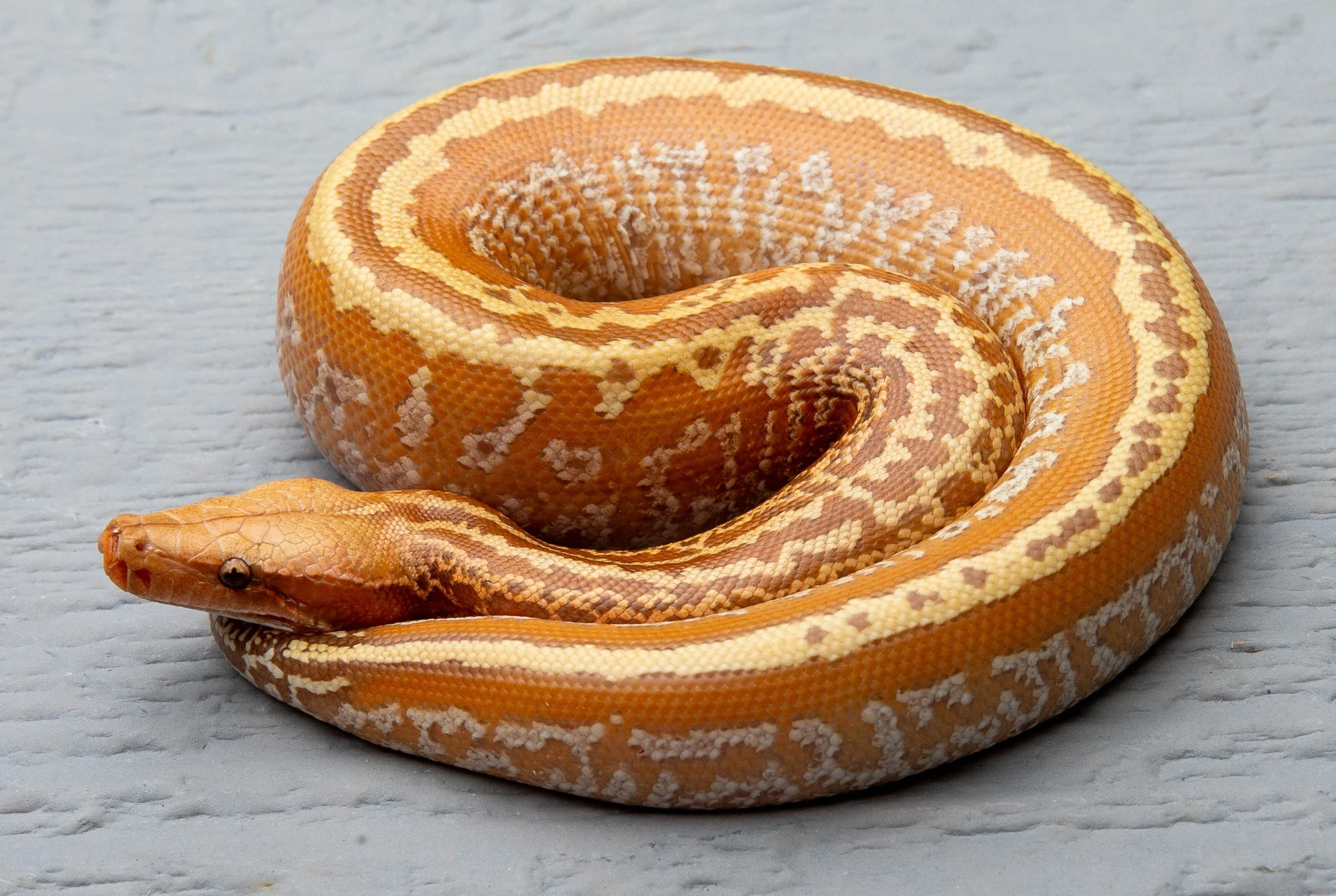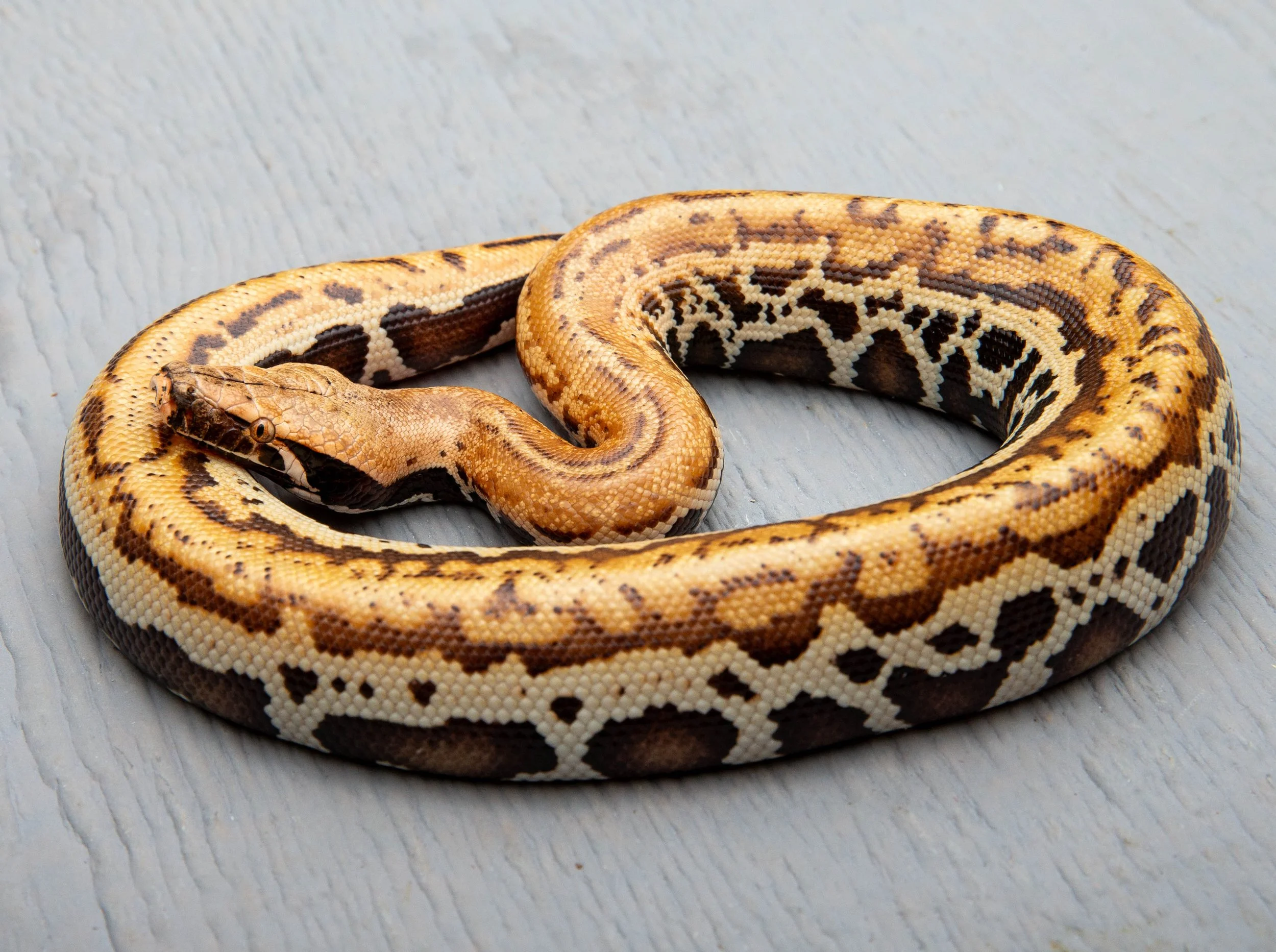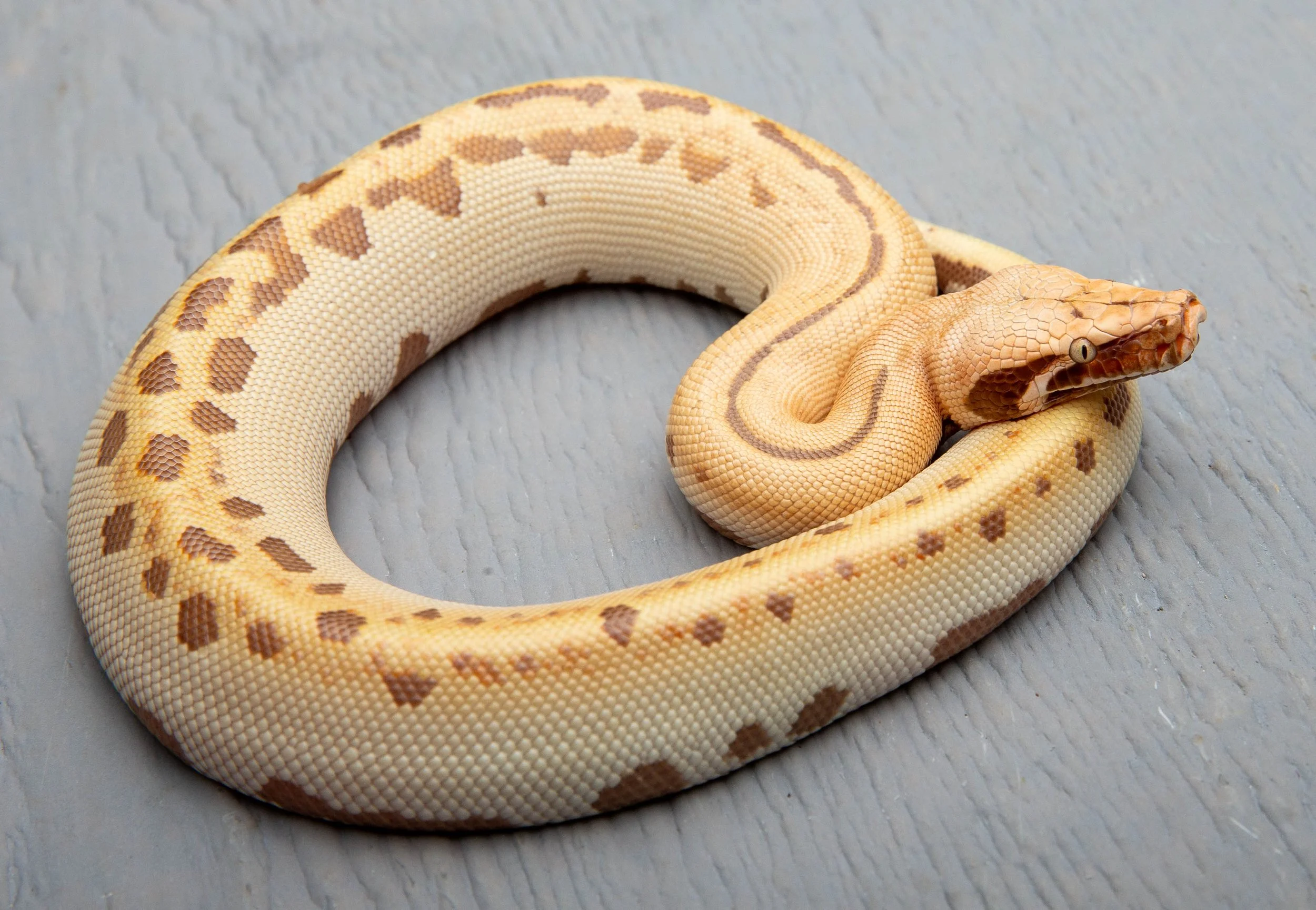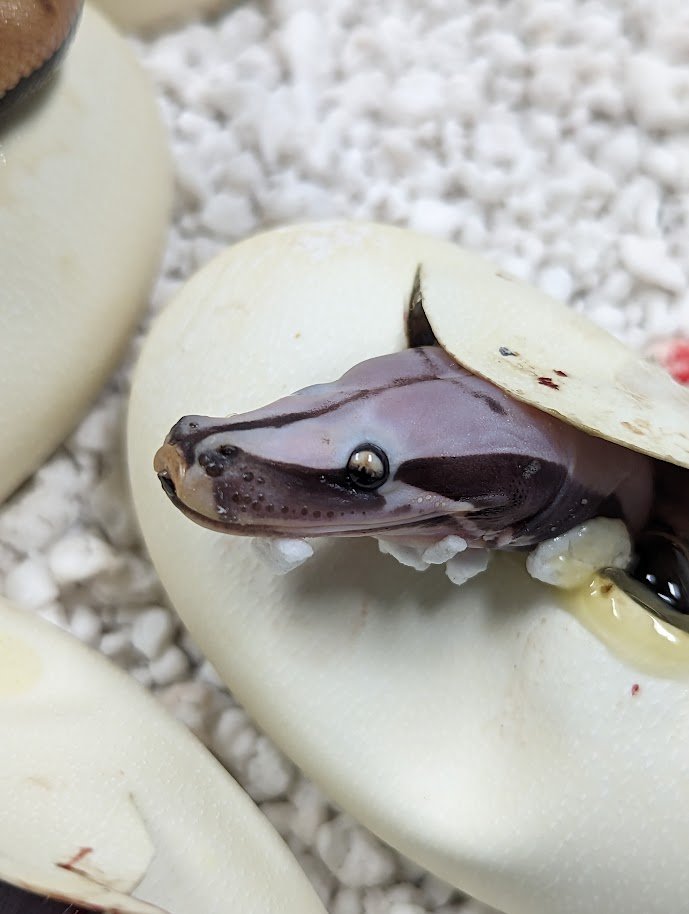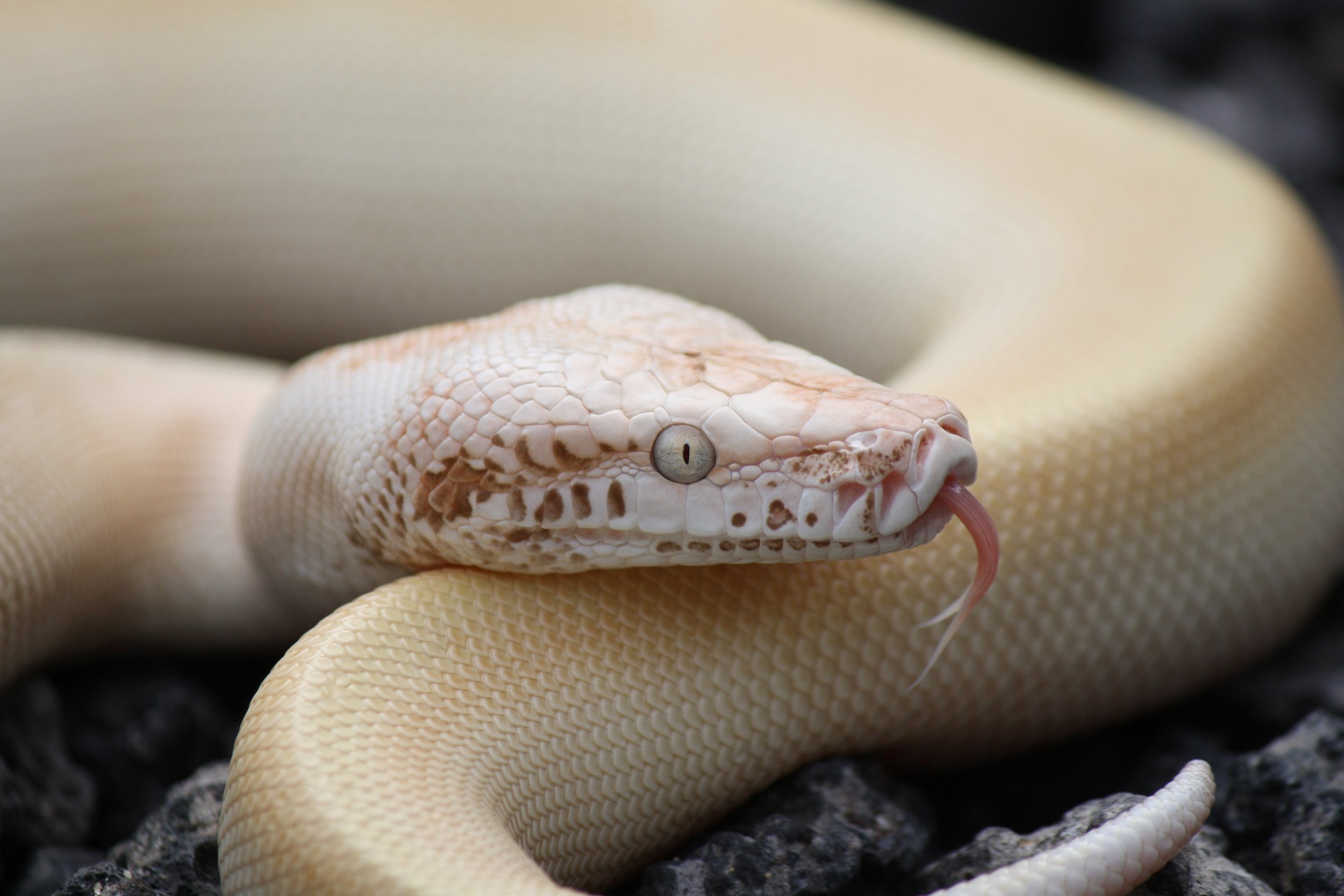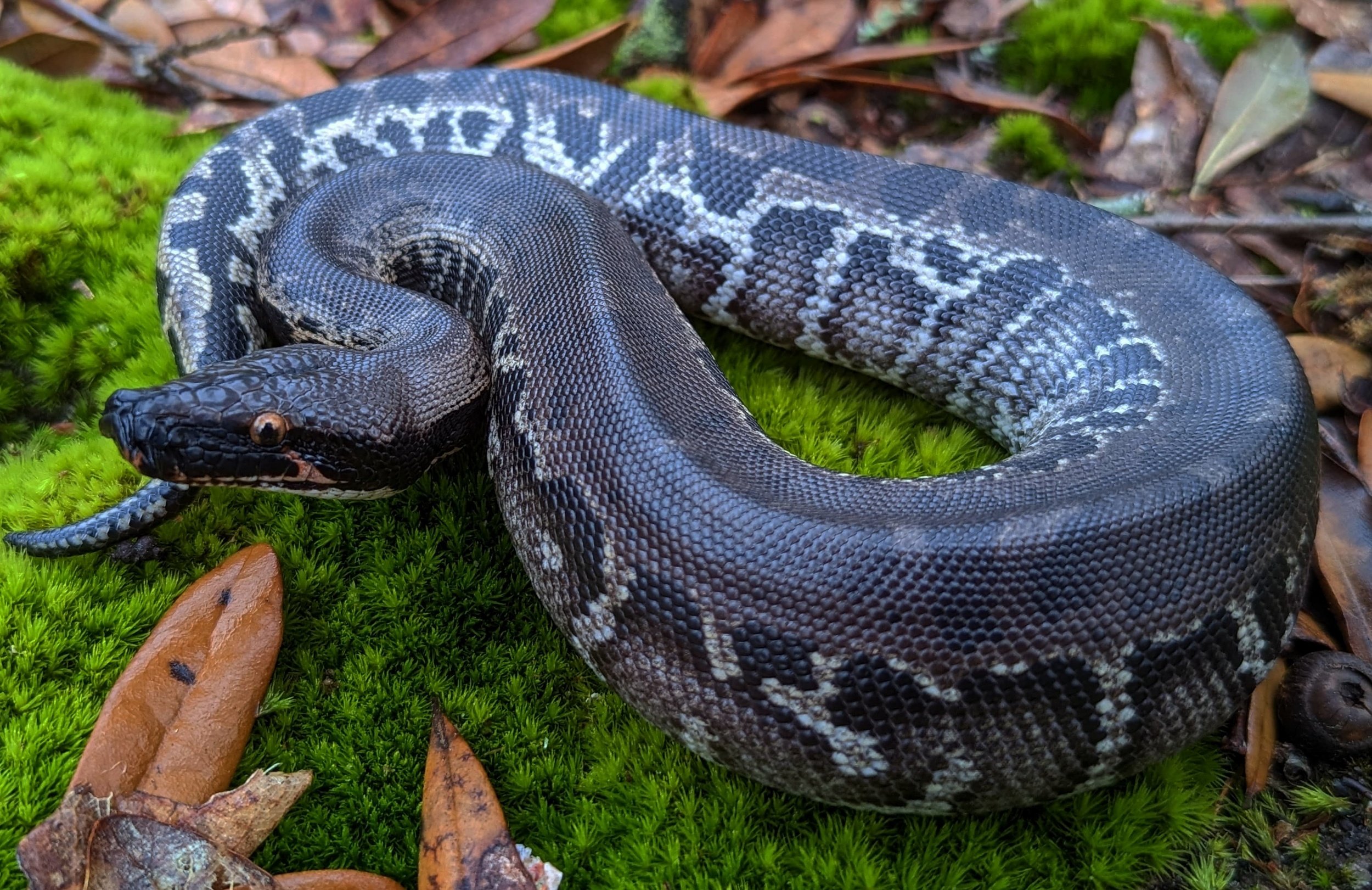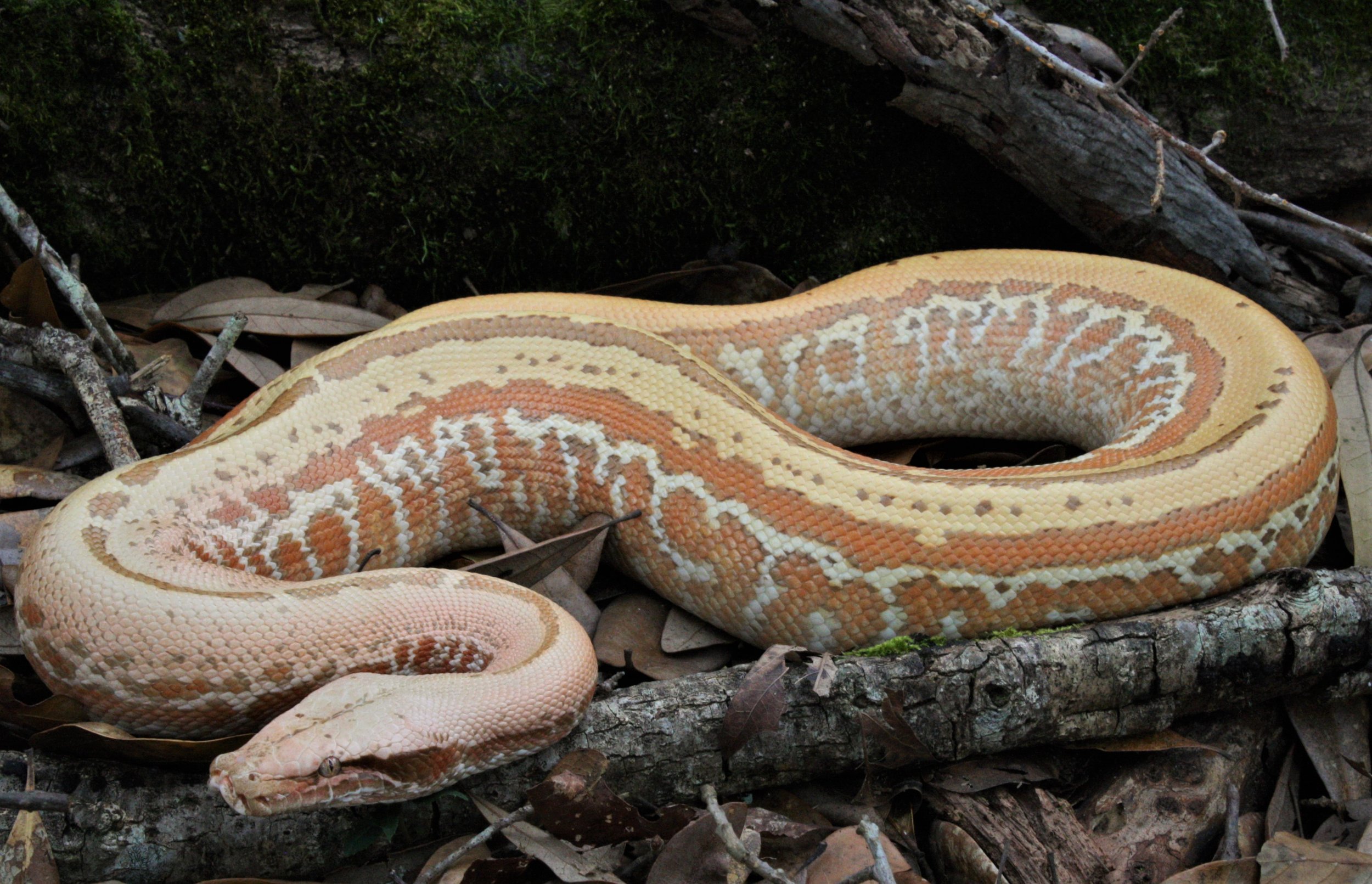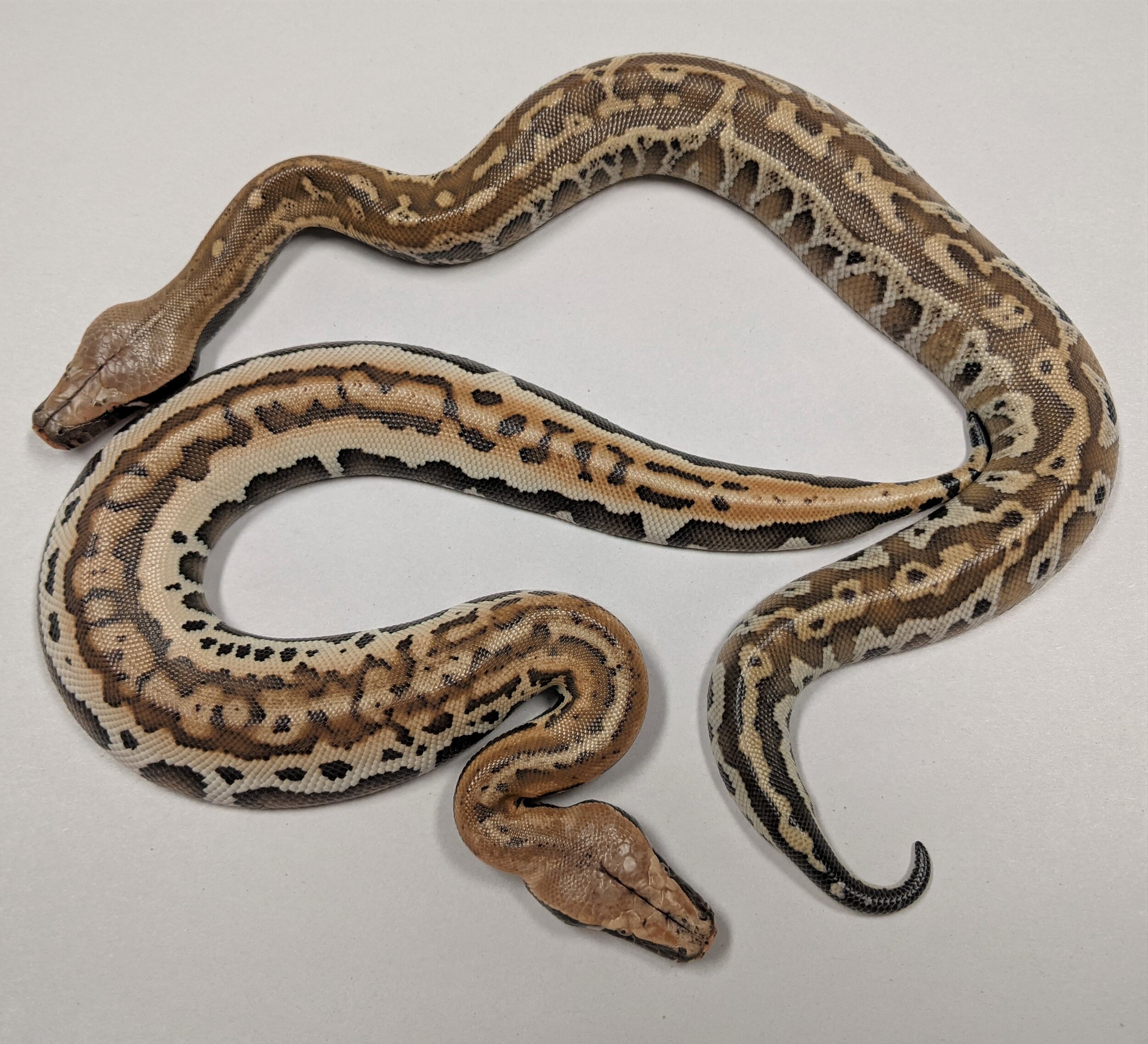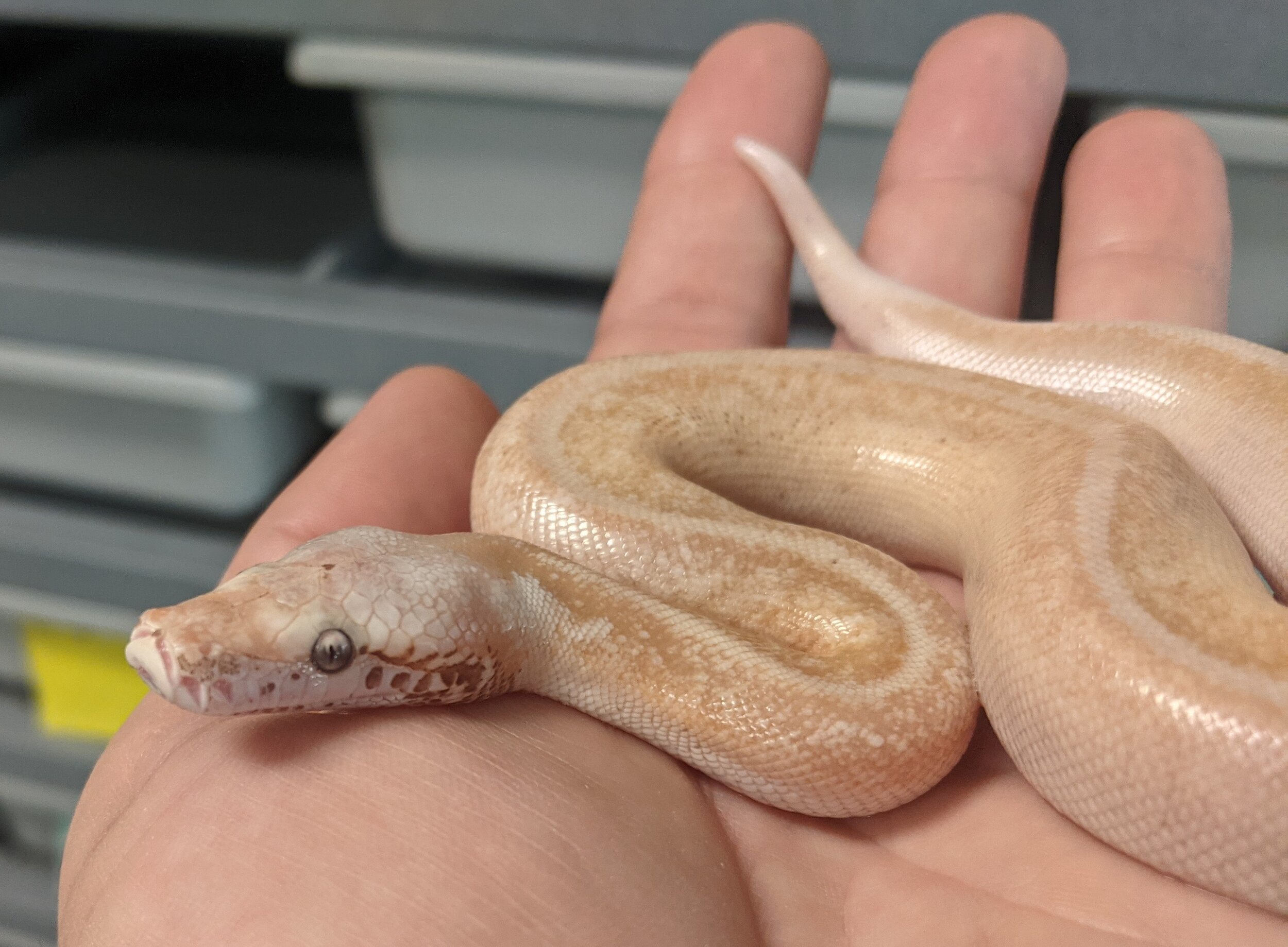While I can’t say for sure what Nick’s goals were for this season (other than to produce a visual pied combo) he went heavy on the Sunder gene to try and prove some of that out. I think some of those animals turned out amazing, and that he would be really pleased with the results.
Clutch 1: Sideswipe Ultra x Sideswipe Ultra
Clutch 2: T+ Zig Zag Batik x T+ VPI Stripe Golden Eye
Clutch 3: Super Sunder Golden Eye het T+ x T+ Batrix
Clutch 4: Golden Eye DH Pied, T+ x Pied, het T-
Clutch 5: T+ Fallout x Golden Eye Ivory het T+
Clutch 6: Pied x T+ Sunder Golden Eye
Clutch 7: T+ CBE Stripe x CBE Stripe het T+
Clutch 8: T+ Sunder x Golden Eye het T+
Clutch 9: T+ CBE Stripe x Stripe Golden Eye het T+
Clutch 10: T+ Sunder 007 x T+ Fallout
Clutch 11: Sunder 007 het T+ x Ivory
Clutch 12: CBE Stripe Golden Eye het T- x CBE Stripe het T-
Clutch 13: T+ Pollen Matrix x Pollen het T+
2025 was a year for many successes in the Blood Python community, and immeasurable loss that we will all feel the ripples of forever. This time since I took over CBE fully has taught me a lot, not just about herp husbandry (which I had some experience with obviously, but it is not my focus), but about friendship and community and coming together. I am so grateful for every single person that has liked or shared a post, bought a snake, sent a message, donated, lent advice, or showed up to help.
To Kyle – You and the family showing up 2 days later ready to roll up your sleeves and dive in (maybe cannonball?) I am eternally grateful.
To Kara, Shawn, and Kathleen – Those were some of the hardest and best days having you here. I didn’t know how hard it would be to unplug an incubator for the last time, but I am so thankful you were all here for that. An end of an Era.
Kara again - Thank you for being my rock, my sounding board, my meme queen, and just a superb human and friend overall.
And while CBE as I have always known it is winding down, I will be here on the sidelines cheering each of you on. Because as Nick always said “This is just the tip of the iceberg”
Stripe Golden Eye, het T+ (Sire of Clutch= T+ CBE Stripe)
T+ Fallout (Sire of Clutch = T+ Sunder 007)
T+ Sunder Golden Eye (Sire of Clutch = Pied)
T+ Sunder 007 x T+ Fallout
Super Sunder Golden Eye, het T+ x T+ Batrix
Pied Golden Eye hatchling - Photo courtesy of Kyle Wittenbach, Snake Barn
From T+ Zig Zag Batik x T+ VPI Stripe Golden Eye = T+ VPI Stripe Batik, poss ZigZag
From T+ Sunder x Golden Eye het T+ = Super Sunder Golden Eye, het T+
From T+ Sunder 007 x T+ Fallout = T+ Sunder 007
From Sunder 007 het T+ x Ivory = Golden Eye Ivory, poss het T+
From Super Sunder Golden Eye het T+ x T+ Batrix = Sunder Pixel, het T+
Nick, April 2025 at the last show CBE did








